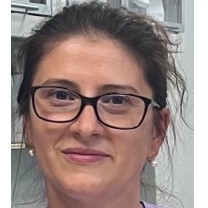Design and Fabrication of Theranostic Nanoparticles
A special issue of Molecules (ISSN 1420-3049). This special issue belongs to the section "Nanochemistry".
Deadline for manuscript submissions: closed (30 June 2023) | Viewed by 4528
Special Issue Editors
Interests: nanomaterials; iron oxide nanoparticles; polymers; biomarkers; disease prevention; preclinical and clinical trials
Special Issues, Collections and Topics in MDPI journals
Special Issue Information
Dear Colleagues,
Theranostics, defined as nanomedicine that combines diagnostics with therapeutics, employ personalized medicine for cancer treatment or other diseases, being designed to improve the detection, increase the efficacy of the treatment and to limit the associated systemic toxicity.
Theranostic approaches have exhibited immense potential in improving the pharmacokinetics, pharmacodynamics, and biodistribution of each therapeutic to enable targeted and sustained drug delivery at the right concentration. The ideal theranostic agent should be engineered to assemble the below criteria:
- Safe to the organism;
- Stable under physiological conditions when being delivered;
- Able to penetrate through any biological barrier encountered, en route to the intended tissue or organ, while having no significant toxic side effects;
- Rapidly and selectively accumulate in target(s) of interest;
- Efficiently deliver a sufficient amount of drug(s);
- Report biochemical and morphological characteristics of disease(s);
- Rapidly cleared from the body or biodegraded into nontoxic byproducts.
Theranostic nanoparticles, designed as multifunctional nanosystems can be engineered in several ways. First, the theranostic must consist of a therapeutic drug (e.g., nucleic acids, therapeutic proteins, or any other chemotherapeutic agent), carrier of the therapeutic payload, targeting ligands and signal emitters (with unique radioactive, optical, or magnetic properties), all of which can be conjugated covalently or non-covalently to the delivery platform, such as quantum dots, iron oxide, gold or silver nanoparticles, etc. Encapsulating both imaging and therapeutic agents together in biocompatible nanoplatforms such as polymeric nanoparticles, ferritin nanocages, and silica nanoparticles is another effective option. Finally, the engineering of unique nanoparticles with intrinsic imaging and therapeutic properties gives the desired results. This can be achieved by post-surface modifications of different targeting molecules or ligands.
This Special Issue is devoted to the field of theranostics selection from design and synthesis, to in vitro and in vivo studies and up to a clinical applied solution, based on a core technology that combines imaging, therapeutic drugs, diagnostic labels, or multiple combinations of nanomedicine.
Dr. Gianina Dodi
Prof. Dr. Abbas Rahdar
Guest Editors
Manuscript Submission Information
Manuscripts should be submitted online at www.mdpi.com by registering and logging in to this website. Once you are registered, click here to go to the submission form. Manuscripts can be submitted until the deadline. All submissions that pass pre-check are peer-reviewed. Accepted papers will be published continuously in the journal (as soon as accepted) and will be listed together on the special issue website. Research articles, review articles as well as short communications are invited. For planned papers, a title and short abstract (about 100 words) can be sent to the Editorial Office for announcement on this website.
Submitted manuscripts should not have been published previously, nor be under consideration for publication elsewhere (except conference proceedings papers). All manuscripts are thoroughly refereed through a single-blind peer-review process. A guide for authors and other relevant information for submission of manuscripts is available on the Instructions for Authors page. Molecules is an international peer-reviewed open access semimonthly journal published by MDPI.
Please visit the Instructions for Authors page before submitting a manuscript. The Article Processing Charge (APC) for publication in this open access journal is 2700 CHF (Swiss Francs). Submitted papers should be well formatted and use good English. Authors may use MDPI's English editing service prior to publication or during author revisions.
Keywords
- nanotheranostics
- diagnostic imaging
- targeted therapy
- core–shell nanoparticles
- organic and inorganic nanoparticles







